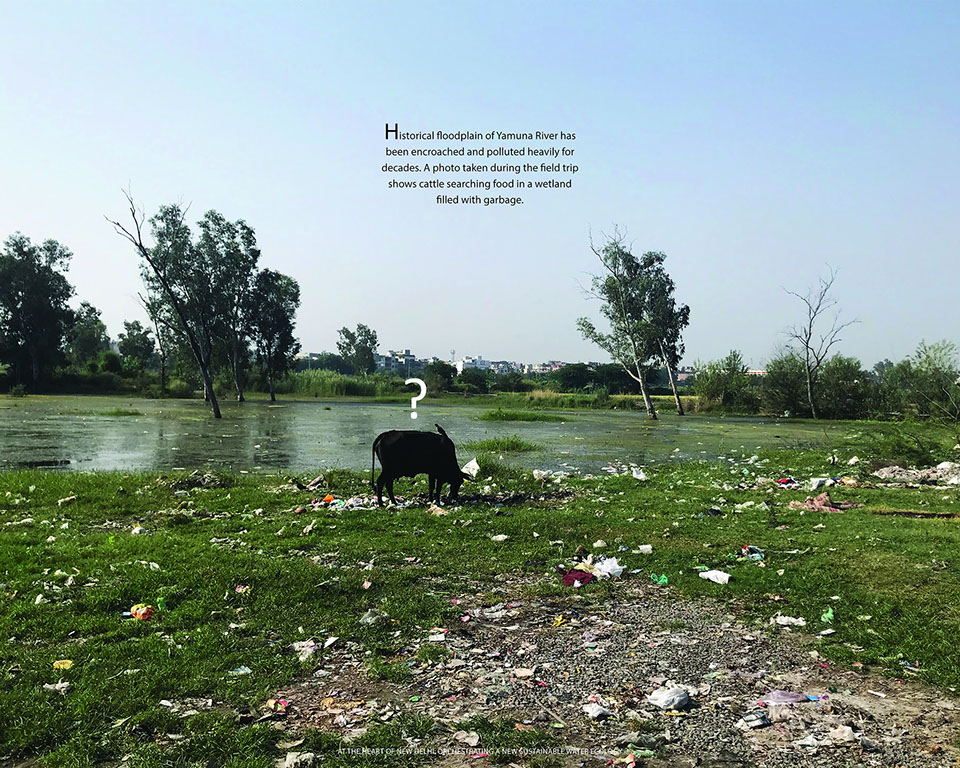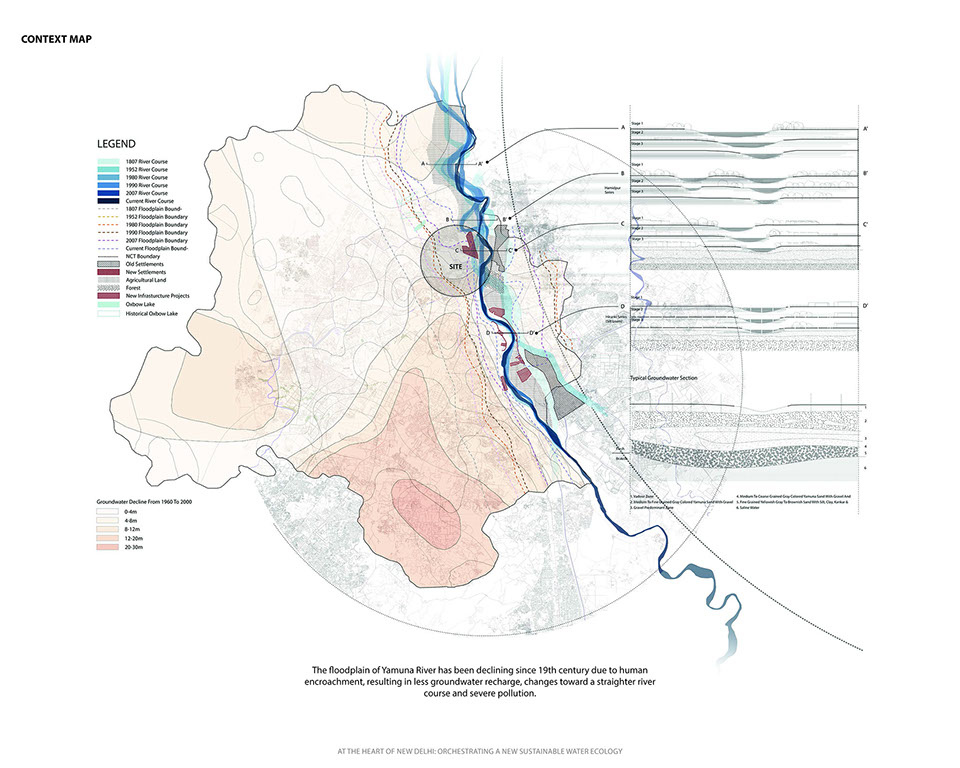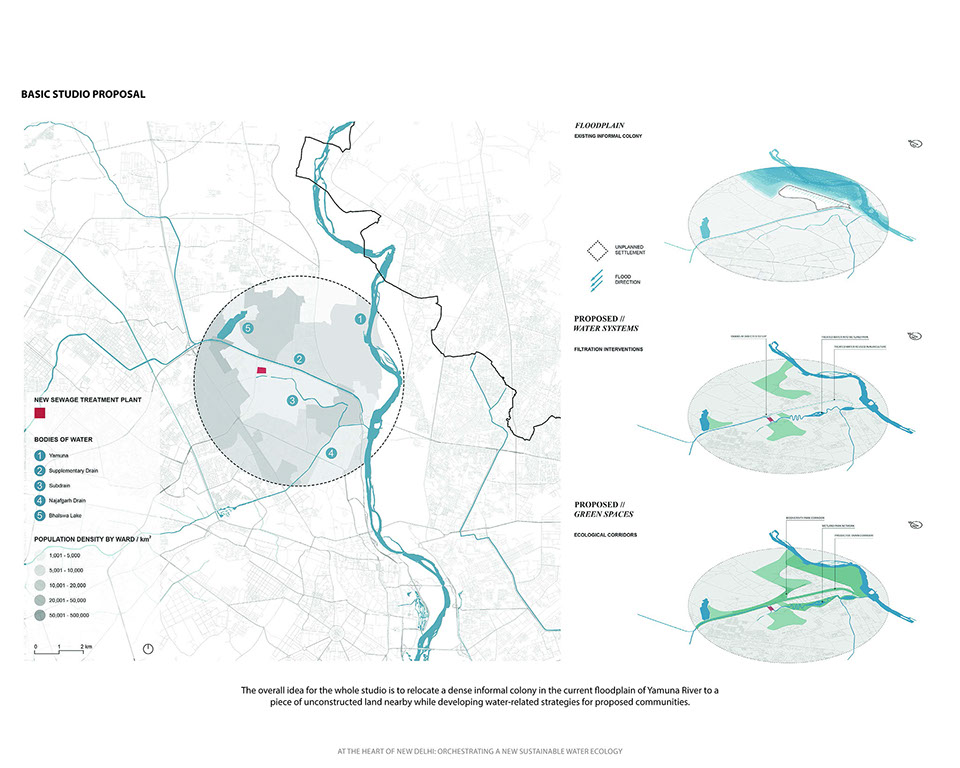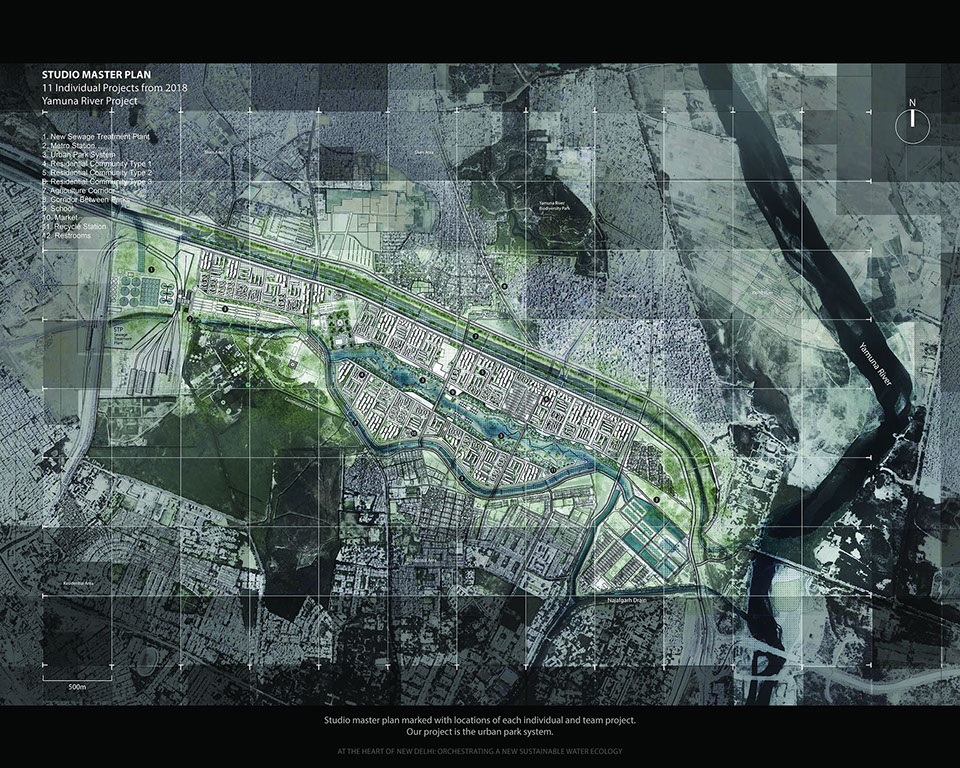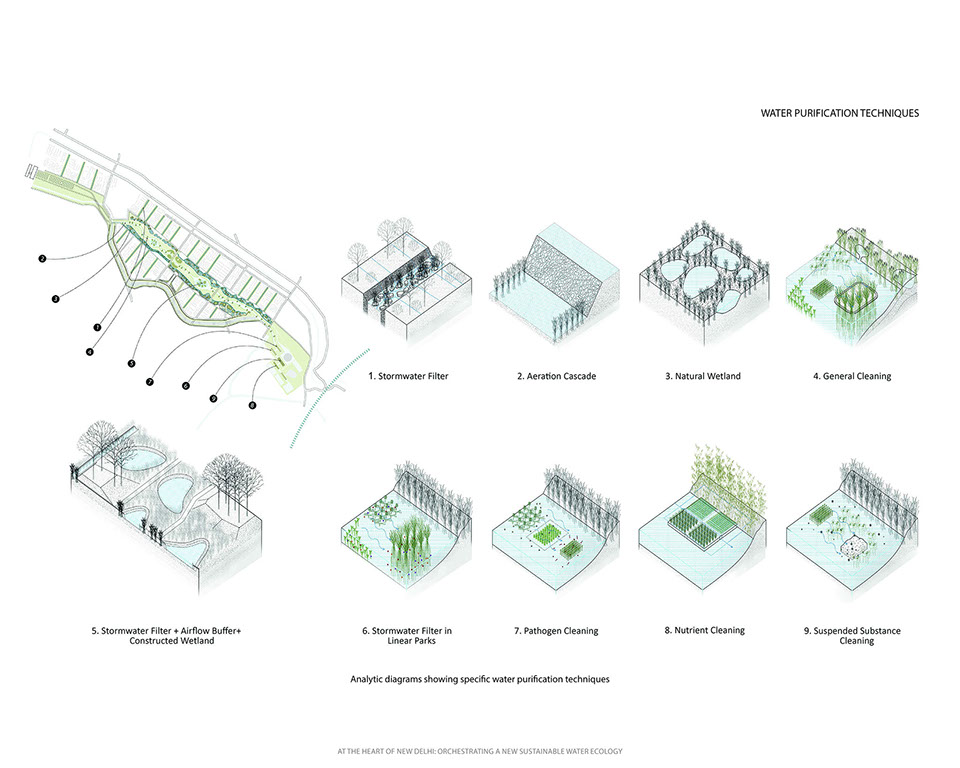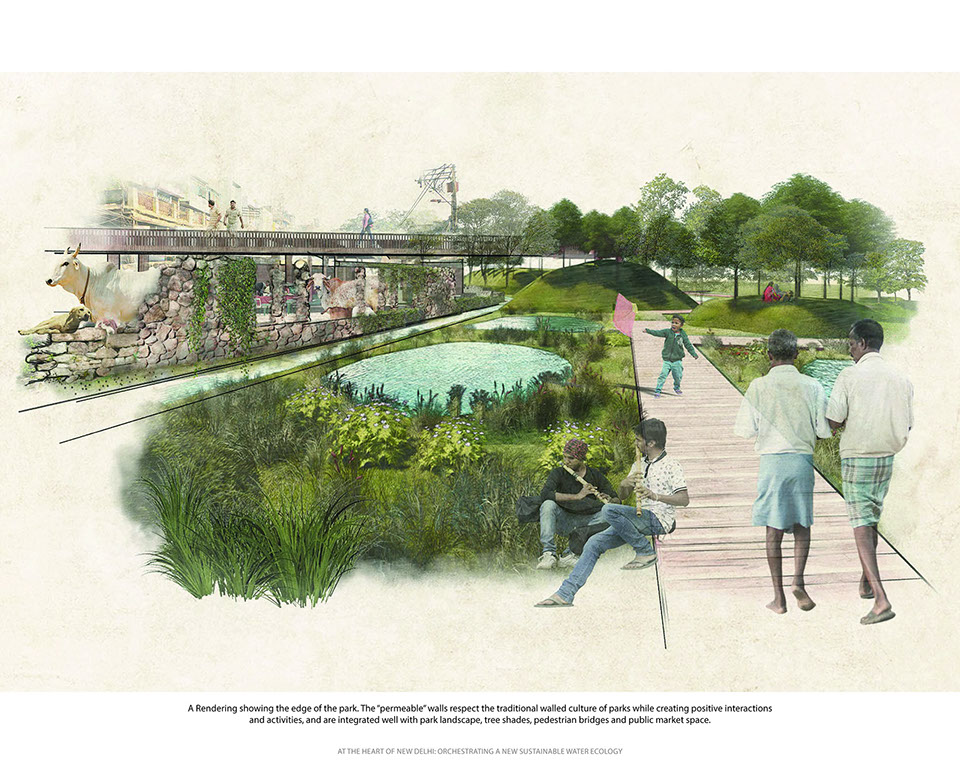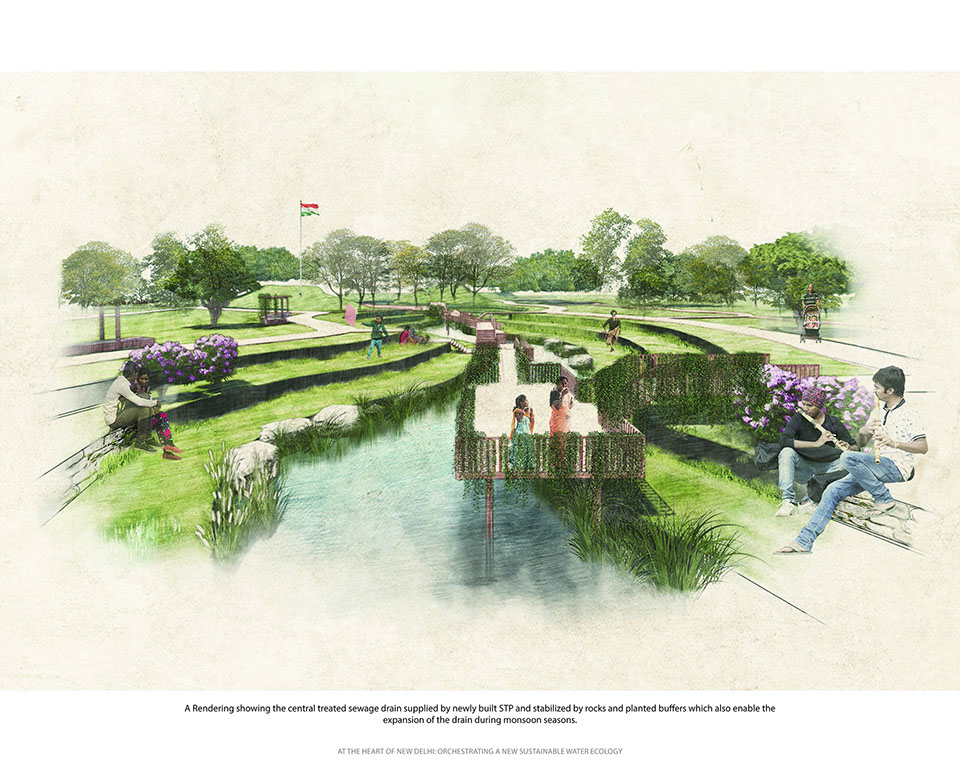During the Fall semester of 2018 as a part of the research studio “Recentering Delhi: A Piece of the City” with professors Maria Gonzalez Aranguren and Pankaj Vir Gupta, Cong Nie and Hangyu Shi completed the project Orchestrating a New Sustainable Water Ecology. Cong and Hangyu’s project has been awarded through American Society of Landscape Architecture Virginia.
Project Description: The Yamuna River is the sacred river of New Delhi – India’s mega-city verging on 22 million people. The river suffers from severe pollution which combined with human encroachment of Yamuna’s floodplain has set off a chain-reaction of threats to the city including drinking water shortages, flooding in addition to pollution. A cross-disciplinary team created a design studio operating at the intersection of social, cultural, and ecological systems of the river and the surrounding floodplain.
The big idea of our studio was to relocate a dense community on the current floodplain of Yamuna River to our site while developing water-related strategies for proposed communities. As the landscape architecture team, we were responsible for planning the whole water system for the studio and designing a new urban-scale water treatment park. The design relives pressure on engineered systems through green infrastructure insertions – topography, plantings, wetlands and retention ponds, and circulation of people and water are woven together to reset a resilient ecology for the use and benefit of the surrounding communities, calling for floodplain restoration, community integration and environmental education, while reflecting the vernacular landscape.
The proposed sewage treatment park is defined by a few key elements including permeable walls, a water treatment system, and various programs and connections.
“Permeable” Walls/ In addition to respect the walled-park culture in New Delhi, we vary the elevation of walls and add canopy structures to enable multiple body-scale activities. These walls follow the topography rather than street boundaries thus creating open space for activating plazas and markets proposed by the architecture team.
Water Treatment System/ The landscape-oriented water treatment system takes advantage of existing elements, consisting of several key parts showcasing how water is treated, protected, and can be enjoyed by local people. It deals with the treated sewage from the existing Sewage Treatment Plant and stormwater runoff from surrounding communities. Maintaining and purifying processes are organized in specific logics, applying native plant species that are common and inexpensive to procure with high ecological values.
Programs and Connections/ The park has four main entrances and is connected to surrounding communities by pedestrian bridges. It’s also connected to the busy metro station on the west. In order to reduce the cost and keep a clear focus, we limit the programs inside. A path system provides accesses throughout the park including a Mughal-style garden with cascades, and a restaurant – a portion of profits from a restaurant would provide funds for park maintenance.
Overall, we are not claiming immediate solutions to the wicked problems of New Delhi and Yamuna River, but we are setting up ecological paradigms that are resilient, culture-related and able to be duplicated in the capital city of India. We understand that the project has limits, but we hope this could be a start. The city will still grow magically while creating environmental stresses, however the landscape has the power to act as the mediator between social and natural interactions in this dynamic process – we have provided such a model.
Link to award:
ASLA VA
